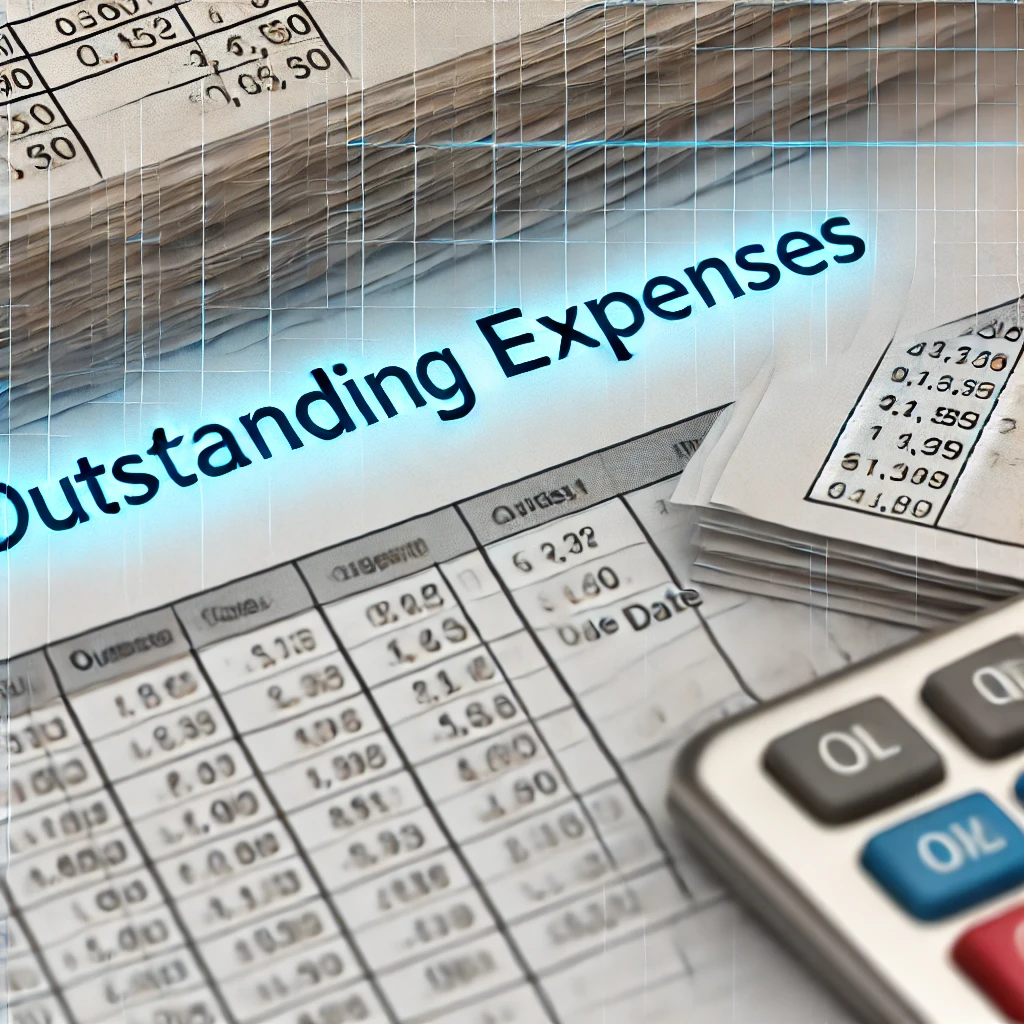Outstanding expenses in accounting refer to those expenses made by a firm that has not yet been paid at the close of an accounting period. They include liabilities that are due and reported in the books but whose payment will be made later. This is important for the proper reporting of liabilities and the accrual basis of accounting, where revenues and expenses are recognized in periods when incurred, not in periods when cash is paid.
Outstanding expenses form part of current liabilities in the balance sheet since they refer to amounts paid out within a short period, often before the operating cycle or financial year close. Outstanding expenses include such things as outstanding salaries, rentals, electrical bills, or interest owed but not yet settled at the close of a fiscal period.
What Is Outstanding Expenses in Accounting?
Outstanding expenses in accounting will be the expenses incurred during an accounting period but not paid by the end of that particular period. It can be considered as the electricity used in a firm during a month, and that amount has not been paid up to the end of the month. Easy to understand: they are services or products consumed and to be paid for afterward.
Proper identification of costs incurred by a company but not paid leads to accurate financial records whereby all the expenses that fall within a particular period have been accounted for. This is important because expenses should be accounted for under the accrual basis of accounting when incurred and not when cash is spent.
Example:
If the rent for December is ₹10,000, and this amount is unpaid by December 31, it is considered an outstanding expense.
| Expense Type | Amount Unpaid | Date Incurred | Payment Due |
|---|---|---|---|
| Rent | ₹10,000 | December 2024 | January 2025 |
| Electricity Bill | ₹5,000 | December 2024 | January 2025 |
Outstanding Expenses: Asset or Liability?
Outstanding expenses are liabilities because they suggest a responsibility that the company should pay in the future. They are included in the current liability subsection of the balance sheet. Because these expenses have already been incurred but are not yet paid, the company has a responsibility to pay them in the next accounting period.
Put more simply:
- Asset: This denotes the ownership of the assets of a business, including cash and equipment.
- Liability: It is a representation of those obligations or debts owed by a business, which may include outstanding expenses or loans.
Thus, outstanding expenses fit into the liability category as they reflect the amounts the business still owes.

Outstanding Expenses – Debit or Credit?
In accounting, outstanding expense is always reported as a credit at the time of its primary recording. This is because an outstanding expense increases the liabilities of a company. The general entry for recording an outstanding expense would be the following:
| Account | Debit | Credit |
|---|---|---|
| Expense A/c | Debit | |
| Outstanding Expense A/c | Credit |
This entry signifies that the expense has been recognized (as a debit) while also recording the unpaid amount (as a credit) as a liability.
Example:
When the rent for December remains unpaid:
- Debit: Rent Expense ₹10,000
- Credit: Outstanding Rent ₹10,000
This entry ensures that the company’s profit and loss statement includes the rent expense for December, even though the payment will occur in the future. The outstanding rent is recorded as a liability.
Outstanding Expenses Journal Entry
Outstanding expenses are recorded through debiting the expense account and crediting the outstanding expenses account, which will therefore be a liability. The general form of the entry for outstanding expenses at the end of an accounting period.
| Date | Particulars | Debit | Credit |
|---|---|---|---|
| xxx | Expense A/c | xxx | |
| xxx | Outstanding Expenses A/c | xxx |
This journal entry ensures that the expense is accounted for in the current period’s financial records while acknowledging the company’s obligation to pay it in the future.
Journal Entry Example:
| Date | Account | Debit | Credit |
|---|---|---|---|
| 31 Dec 2024 | Rent Expense | ₹10,000 | |
| Outstanding Rent | ₹10,000 |
When the outstanding rent is finally paid in the following period, the liability account is debited, and the cash or bank account is credited.
| Date | Account | Debit | Credit |
|---|---|---|---|
| 10 Jan 2025 | Outstanding Rent | ₹10,000 | |
| Cash/Bank | ₹10,000 |
This approach ensures that the rent expense is reflected in the financial statements for December, while the payment happens in January.
Outstanding Expenses in Balance Sheet
In the balance sheet, outstanding expenses are categorized under current liabilities, as they are obligations that the company needs to settle within the next accounting period. Including outstanding expenses in the balance sheet ensures that the financial statement reflects all liabilities, giving a clear picture of the company’s financial obligations.
For example:
| Liabilities | Amount |
|---|---|
| Outstanding Wages | 10,000 |
| Outstanding Rent | 5,000 |
| Total Outstanding Expenses | 15,000 |
By showing outstanding expenses in this manner, the balance sheet provides a clear picture of the company’s short-term obligations.
Difference Between Outstanding Expenses and Prepaid Expenses
Outstanding expenses and prepaid expenses are two conflicting concepts. While outstanding expenses refer to costs that have been incurred but not paid for yet, prepaid expenses are payments made to acquire services or goods to be consumed later on.
Prepaid Expenses: Payments made in advance for future expenses.
Outstanding Expenses: Expenses incurred but unpaid.
| Aspect | Outstanding Expenses | Prepaid Expenses |
|---|---|---|
| Definition | Expenses that have been incurred but are yet to be paid. | Expenses that have been paid in advance for future periods. |
| Accounting Treatment | Recorded as liabilities on the balance sheet. | Recorded as assets on the balance sheet. |
| Examples | Unpaid rent, wages due, utility bills. | Prepaid insurance, advance rent. |
| Nature | Liability | Asset |
| Timing of Payment | Paid after usage | Paid before usage |
| Balance Sheet Treatment | Current Liabilities | Current Assets |
Outstanding Expenses in Accounting FAQs
What is the treatment of outstanding expenses in accounting?
Outstanding expenses are recorded as liabilities on the balance sheet and are credited in the journal entry process.
Is outstanding expenses a current liability?
Yes, outstanding expenses are considered current liabilities as they represent obligations that must be settled within a short period.
Are outstanding expenses considered an expense?
Yes, they are expenses that have been incurred but not yet paid, and they are recorded in the period in which they are incurred.
What is the difference between outstanding expenses and accrued expenses?
Outstanding expenses refer specifically to unpaid expenses, while accrued expenses include any incurred expenses that have not yet been recorded.
How do outstanding expenses affect the balance sheet?
They increase the liabilities on the balance sheet, affecting the overall financial position of the company.


